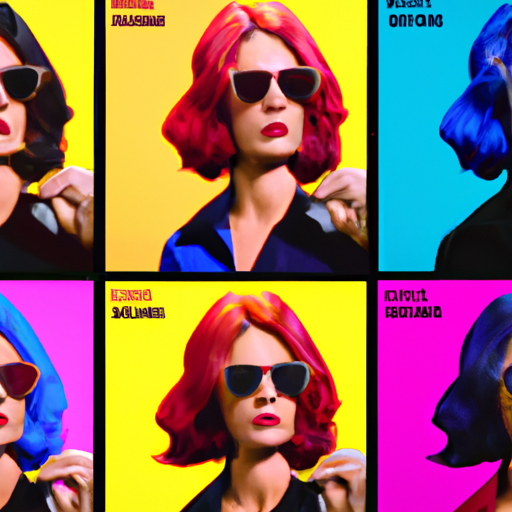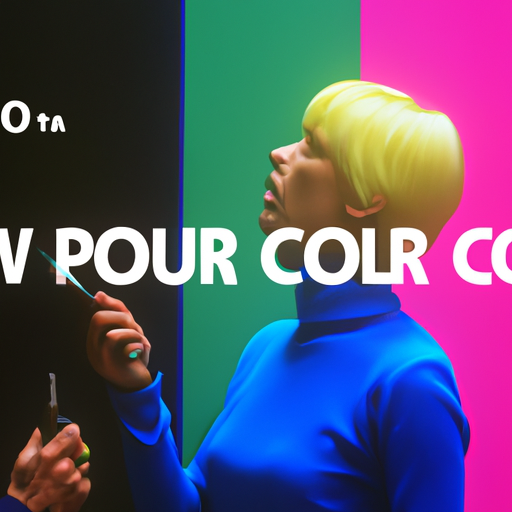
-
Table of Contents
- The Power of Color in Advertising Art and Graphic Design
- The Psychology of Color
- The Role of Color in Branding
- 1. Coca-Cola
- 2. McDonald’s
- 3. Apple
- Color in Advertising
- 1. Attention-Grabbing
- 2. Brand Differentiation
- 3. Emotional Appeal
- 4. Cultural Significance
- Case Studies: The Impact of Color in Advertising
- 1. Heinz Ketchup
- 2. T-Mobile
- 3. Dunkin’ Donuts
- Conclusion
The Power of Color in Advertising Art and Graphic Design

Color is a powerful tool in the world of advertising art and graphic design. It has the ability to evoke emotions, convey messages, and create memorable experiences for consumers. In this article, we will explore the impact of color in advertising and how it can be effectively used to capture attention, communicate brand values, and influence consumer behavior.
The Psychology of Color
Before delving into the practical applications of color in advertising, it is important to understand the psychology behind it. Colors have the ability to evoke specific emotions and associations in individuals, making them a crucial element in visual communication.
Here are some common associations and emotions associated with different colors:
- Red: Often associated with passion, energy, and urgency. It can create a sense of excitement and stimulate appetite, making it a popular choice for food and beverage brands.
- Blue: Symbolizes trust, reliability, and calmness. It is frequently used by financial institutions and healthcare providers to convey a sense of security and professionalism.
- Yellow: Represents happiness, optimism, and warmth. It can grab attention and create a sense of cheerfulness, making it suitable for brands targeting a youthful audience.
- Green: Associated with nature, growth, and freshness. It is often used by brands promoting eco-friendly products or emphasizing sustainability.
- Orange: Evokes enthusiasm, creativity, and energy. It can create a sense of excitement and is commonly used by brands in the entertainment and sports industries.
- Purple: Symbolizes luxury, creativity, and spirituality. It is often used by high-end brands to convey a sense of elegance and sophistication.
Understanding the psychological impact of colors allows advertisers and graphic designers to strategically select hues that align with their brand values and desired consumer response.
The Role of Color in Branding
Color plays a crucial role in branding as it helps create a visual identity that consumers can easily recognize and associate with a particular brand. Consistency in color usage across various marketing channels helps build brand recognition and fosters brand loyalty.
Let’s take a look at some successful examples of color usage in branding:
1. Coca-Cola
The Coca-Cola brand is instantly recognizable due to its iconic use of red. The color red not only grabs attention but also evokes feelings of excitement and happiness. Coca-Cola has successfully associated its brand with these emotions, making it a dominant player in the beverage industry.
2. McDonald’s
McDonald’s is another brand that effectively uses color to communicate its brand values. The combination of red and yellow in its logo and restaurant design creates a sense of energy, fun, and warmth. These colors also stimulate appetite, making them a perfect choice for a fast-food chain.
3. Apple
Apple’s branding is characterized by its minimalist design and the use of white. The color white represents simplicity, elegance, and innovation, which aligns with Apple’s brand values. The clean and sleek design, combined with the use of white, has helped Apple establish itself as a leader in the technology industry.
These examples demonstrate how color can be a powerful tool in creating a strong brand identity and influencing consumer perception.
Color in Advertising
When it comes to advertising, color can be used strategically to capture attention, convey messages, and influence consumer behavior. Here are some ways in which color is effectively used in advertising:
1. Attention-Grabbing
Colorful and vibrant advertisements are more likely to catch the viewer’s attention compared to dull and monochromatic ones. Bright colors, such as red, yellow, and orange, are particularly effective in grabbing attention and creating a sense of urgency. Advertisers often use these colors to highlight limited-time offers, discounts, or new product launches.
2. Brand Differentiation
Color can help differentiate a brand from its competitors. By using unique color combinations or shades, a brand can create a distinct visual identity that sets it apart. For example, the use of purple by Cadbury’s chocolate helps differentiate it from other chocolate brands and creates a sense of luxury and indulgence.
3. Emotional Appeal
Colors can evoke specific emotions and create a connection with the audience. Advertisers often use colors that align with the desired emotional response to their product or service. For example, a spa or wellness center may use calming shades of blue and green to create a sense of relaxation and tranquility.
4. Cultural Significance
Colors can have different cultural meanings and associations. Advertisers must be mindful of cultural nuances when using color in global campaigns. For example, while white represents purity and innocence in Western cultures, it is associated with mourning in some Asian cultures. Understanding cultural significance helps advertisers avoid unintended negative associations.
Case Studies: The Impact of Color in Advertising
Let’s explore some case studies that highlight the impact of color in advertising:
1. Heinz Ketchup
In 2000, Heinz Ketchup launched an advertising campaign featuring a green-colored ketchup called “EZ Squirt.” The unconventional color choice created a buzz and generated significant media attention. While the green ketchup was not a permanent addition to the product line, it successfully captured the attention of consumers and increased brand visibility.
2. T-Mobile
T-Mobile, a telecommunications company, uses a vibrant shade of magenta as its brand color. The distinctive color helps T-Mobile stand out in a crowded market and creates a strong brand identity. The use of magenta has become synonymous with T-Mobile, making it instantly recognizable to consumers.
3. Dunkin’ Donuts
Dunkin’ Donuts, a popular coffee and donut chain, recently rebranded itself as “Dunkin'” and introduced a new logo featuring bright pink and orange colors. The new logo reflects the brand’s energetic and fun personality, while the use of pink and orange creates a sense of excitement and appetite appeal.
Conclusion
Color is a powerful tool in advertising art and graphic design. It has the ability to evoke emotions, convey messages, and create a strong brand identity. By understanding the psychology of color and strategically incorporating it into advertising campaigns, brands can capture attention, differentiate themselves from competitors, and influence consumer behavior. Whether it’s through attention-grabbing visuals, emotional appeal, or cultural significance, color plays a vital role in creating impactful advertising experiences.
Next time you see an advertisement or a brand logo, take a moment to analyze
